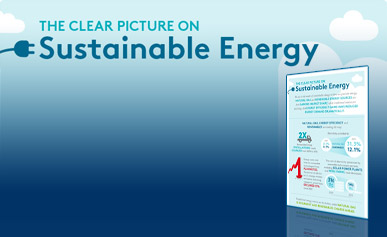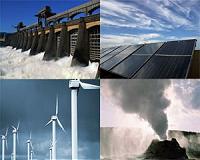Sustainable Energy

Sustainability advocacy
A few Tried and True Strategies for Inspiring Environmental change!
Many business leaders find it challenging to lead others on the path to sustainability – and not necessarily because they’re working with a tough audience (although that happens too). Rather the trouble lies in their inability to communicate in way that generates real-world action and measurable results. But certain individuals seem to have cracked the code – they’ve figured out how to turn environmental conversations into sustainable changes for their companies, and for the environment. What exactly are these leaders doing differently, and how can we learn from them?
Principle I: Emphasize the business necessity.
Aspiring change leaders must have their heads wrapped firmly around the financial implications of their pet environmental initiatives. Environmental strategy consultant believes that creating a compelling business need is by far the most critical factor for getting decision makers on board with green initiatives. The good news for aspiring sustainability leaders is that the case for business necessity is getting easier to make with every passing day.
“Customers are asking questions about environmental performance,” and “Companies like Wal-Mart will give more shelf space to those companies that can reduce their footprint. Employees demanding more from companies they work for is another clear force that creates a compelling business need – it’s tough enough to compete for the best talent without turning them off on values-driven and environmental issues.”
The take-home? When seeking to serve the sometimes elusive triple bottom line, make sure you start with the bottom-line that decision makers value most- cold, hard cash. This topic is sure to get them listening.
Principle II: Frame environmental goals in terms of the other’s self interest.
With work demands and obligations bombarding them at every possible moment, how can we get organizational leaders to make our green initiative a priority? Here’s the secret of all motivational conversationalists: Take the perspective of the person you are speaking to and frame your agenda so that it occurs to other person as highly relevant to their own personal goals.
Of course, to accomplish this requires that we do a minimal amount of homework to learn more about our audience. What are their goals? How do these goals relate to our proposal? What do they have to gain by our success? This may seem like a lot to think through up front, but if we are willing to make a habit of this sort of analysis our persuasive abilities will skyrocket.
A good example comes from environmental initiatives for one company. Which has a distinguished track record of leading change in the organization and attributes much of the success to this simple habit? “There are multiple benefits to all environmental initiatives, so the language we use to impart the message has to mirror that diversity,” “For example, if I’m promoting an energy conservation initiative such as a lighting retrofit for the facilities, I will need to alter my message based upon my audience. I need to address the financial savings on our utility bill to the finance folks, the labor and maintenance benefits to the technicians in the field, and the quality of light with clients or tenants of the facility.”
Principle III: Appeal to enlightened self-interest.
Once you’ve framed your proposal in terms of ever-pressing financial imperatives and the other person’s self-interest, feel free invoke the “better angels” of your audience’s nature. Invite them to see how jumping on board with your initiative will also serve the more high-minded planetary and humanistic bottom-lines. Sometimes the best way to do this is directly, by discussing the positive global impact that your green proposal will create in terms of waste and greenhouse gas reduction. Other times it may be preferable to first be discreet, seeking topics that evoke in your audience a feeling of selflessness and a desire to contribute.
Creating rapport through meaningful conversations. “A great tactic is to look around and find something that the person you’re talking to really cares about. I’ve found that a universally powerful topic is children. If you can get people take a second to think about their children, and the effect that their choices might have on them, they seem to open up and be much more willing to consider higher causes like the environment.” Whatever your angle, remember that – beneath the cynicism and chaos – people want to do the right thing. You are, in fact, giving them a fresh opportunity to do just this.
Principle IV: Use humor to melt defensiveness.
Unfortunately, for most people there is still a huge gap between environmental awareness and environmental action. This gap often causes them to feel slightly guilty and defensive when the topic of saving the environment is even raised. If we don’t overcome it, this subtle mental block can make our audience unreceptive and make our words more likely to fall upon deaf ears. What are we to do? How can we get past this mental filter and raise our audiences to consider new possibilities? One strong approach is with humor.
One company has turned the tactic of using humor to overcome environmental guilt into an art by designing a stylish faux legal contract called an “Environmental Guilt Waiver.” This contract bestows clients and friends with a “24-hour exemption from all existential torment in connection with the environmental crisis” for making simple positive environmental choices in their daily life. The result? After receiving the waiver, clients who might normally be resistant to discussing the environment open up more easily and take a more active interest in the topic. “Making people feel guilty doesn’t help the environment,” “People want to have fun and be part of the solution. We’re doing what we can to make saving the planet a more pleasant experience!”
Principle V: Paint an inspiring vision.
John F. Kennedy gave us the image of a man on the moon. These world leaders knew that all great accomplishments start out as little more than compelling images that capture our imagination. Granted, few people will ever reach the heights of power and influence that these historical figures attained, but each of us can nonetheless draw from that same well of wisdom when we seek to cause changes in our own work-life sphere.
Want to be a true visionary? Simply do this: envision the end result that you are seeking to cause for your organization and help others see it too. Make it vivid, make it compelling, make it believable and make it personal. What are the implications for your audience of this goal coming to fruition? How will their life – and the life of their organization – be changed as a result of small efforts made today? If you can get others in your organization to use their imagination to experience your environmental proposal in this way, you will generate astounding levels of motivation for your cause.
Principle VI: Stick with it.
Rome wasn’t built in a day, and neither were our current environmental challenges. As you do your part to reinvent the wheel in a new shade of green, remember to be patient and – even more importantly – be persistent. No matter how eloquent, business savvy and sincere we may be, sometimes the only way to get through to people is with good old-fashioned repetition. Allow yourself to be the squeaky (green) wheel that gets the grease!
Someone once remarked that breaking up with someone is a lot like trying to tip over a refrigerator…you have to rock it a few times before it actually topples over. Getting people to change their environmental thinking and behaviors is the same way. So stick with it. Be persistent. After all, how much does environmental change really matter to you? Are you in it to win a popular contest or to do the right thing? Are you willing to continually raise the issues that matter to you most, even when those around you don’t seem interested? If so, you are a true leader, and success is only a matter of time.
YJ Draiman, Energy, Telecom & Water Conservation Specialist

World class renewable energy innovation enterprise zone revealed for Los Angeles – Proposed by YJ Draiman

YJ Draiman welcomes innovative renewable energy zone approach which will create 200,000 + new jobs over the next 5-10 years.
An ambitious project that will transform the way universities, business and industry collaborate, and establish Los Angeles as a world leader in the research, development and design of next generation renewable energy technology, was announced today, January 2, 2011. Spearheaded by YJ Draiman and the Economic development agency, Draiman Staff, and National Technology Renewable Energy Zone, will be established in the city of Los Angeles with the Universities of Southern California Technology Innovation Development at its heart.
A large parcel of land will be allocated to set up the renewable energy enterprise zone site, which will be within the boundaries of Los Angeles. There will be an academic center which will be transformed into a center of excellence for academic research, commercialization and industry collaboration.
The renewable energy zone initiative, which would span further than the confines of the City of Los Angeles and include Southern California, is expected to create 200,000 + new jobs over the next 5-10 years and give a boost to the Los Angeles economy through further industry academia collaboration and inward investment.
The developer said: “This new vision of the Renewable energy Technology Innovation Center will be the cornerstone of Los Angeles Technology and Renewable Energy Zone. The developer’s vision for The Renewable energy Zone is to provide a breeding ground for ambitious companies to harness cutting-edge research, access the best people and develop the products which will shape the renewable energy industry of tomorrow.
“Southern California has already claimed a place on the renewables map attracting energy heavyweights and pioneers in the solar and wind sector and we believe that by establishing this zone we will help reinforce Los Angeles position as a location of choice for the rapidly expanding renewables industry.”
Developer said: “The Universities in the Los Angeles area’s Technology and Innovation Center is a transformational project for Los Angeles, building on California’s great tradition of innovating new technologies and developments in fields; including energy and engineering while creating and supporting hundreds of jobs. Through this collaboration, the aim is to quadruple the scale of research program investment in Los Angeles in areas key to economic growth by up to $10 billion + in five to ten years. “And now, as an integral part of Los Angeles Enterprise’s new Technology and Renewable Energy Zone, which aims to establish Los Angeles as a premier location for inward investment into world-leading technology and renewables research and development, we have the potential to deliver huge economic and social benefits, not only in Los Angeles but nationally and beyond.”
YJ Draiman’s vision for Los Angeles is to make LA the World Capital of Renewable Energy, Energy Efficiency & Water Conservation.
The developer said: “The Technology and Innovation for renewable energy zone will help transform Los Angeles and Southern California. By capitalizing on our leading, industry-relevant research, the renewable energy zone will attract billions of dollars of inward investment to the city of Los Angeles, drive global businesses, create jobs, and support the development of our highly-qualified graduates and postgraduates. “As a leading technological hub of Universities, they are committed to sharing knowledge to address challenges that affect every area of society, including energy, health, manufacturing and economics. The renewable energy zone will forge new levels of collaboration between researchers, the public and private sectors to accelerate the pace of research and development and deliver benefit to companies, the economy and Southern California.” The collaborative approach with the Universities, Los Angeles Enterprise and existing pioneering renewable energy leaders means that companies locating in the zone will have access to government support and some of the world’s best industry and academia in the fields of technology, engineering and energy. The project represents a supportive government and business environment where companies locating in and around the zone may be eligible for additional support for job creation, innovation and staff development, delivered through various California Enterprise schemes.
When the need arises we will establish facilities within the existing Zone that offer temporary accommodation for prospective tenants until construction of the research center is complete or, if required, a purpose-built industry engagement building is created within the Zone.
Renewable energy Zone is designed to draw on Southern California’s existing competitive advantage by providing the right business environment for the renewables industry to continue to grow and further develop. Recent announcements from industry leaders have reinforced Southern California’s position as a world leading city in solar, wind research and development. A leader in energy innovation with unrivalled human and natural resources in renewable energy, Southern California is building on its rich history of oil and gas exploration and developing an infrastructure to cement its position as a world class location for international companies looking to invest in renewable energy and Energy efficiency.
We must develop our hydrocarbon resources and allocate a 20 percent of the revenue for renewable energy and energy efficiency. This will turn the economy and provide thousands of jobs for the long term. Our economic prosperity depends on it. These jobs can not be performed overseas. It will also increase our energy independence and make the U.S. less reliant on foreign sources of energy.
In addition to this theme, I would also set up a department to handle water conservation, rainwater harvesting and greywater.
Implement an infrastructure collection of runoff water and filtering it for useable purposes.
Modify building codes to implement better insulation and efficiency, better energy efficient windows, renewable energy system (photovoltaic and wind combo systems), high efficiency rating HVAC systems, Geothermal systems, envelope exterior that is insulated from the sun’s heat, landscape design for proper shading and drought resistant, rainwater harvesting, greywater systems.
“Good leaders create a vision, articulate the vision, passionately own the vision, and relentlessly drive it to completion” -
“It is Cheaper to Save Energy than Make Energy” “Water is the source of life - treasure it!” YJ Draiman
“Water is the source of all life on earth. It touches every area of our lives. Without it, we could not thrive — we could not even survive.”
“Those who control the energy supply control whole continents”
“Those who control the water sources control life”
Who controls the food supply controls the people;
who controls energy control whole continents;
who controls money controls the world;
who controls the water supply controls life. |
